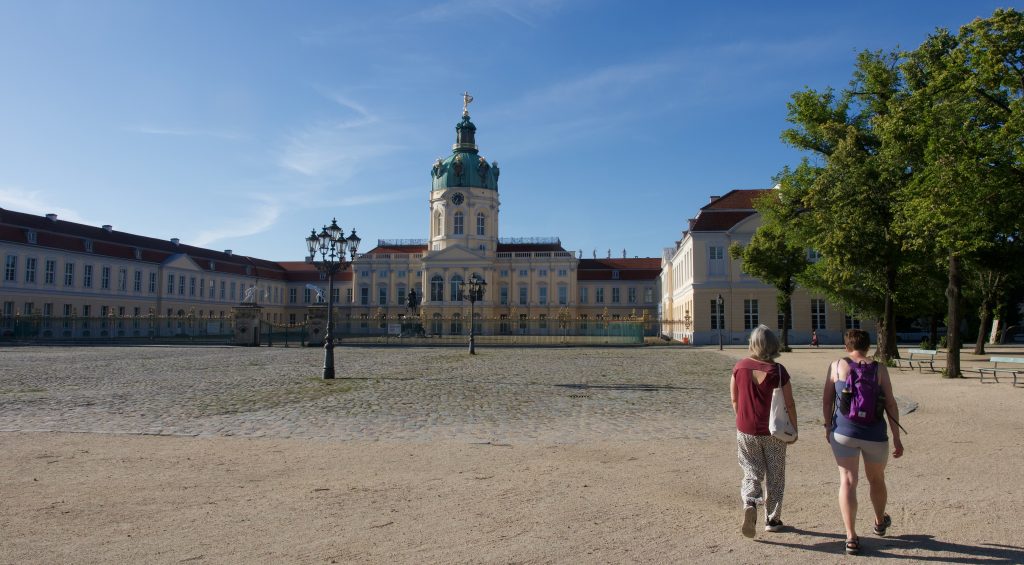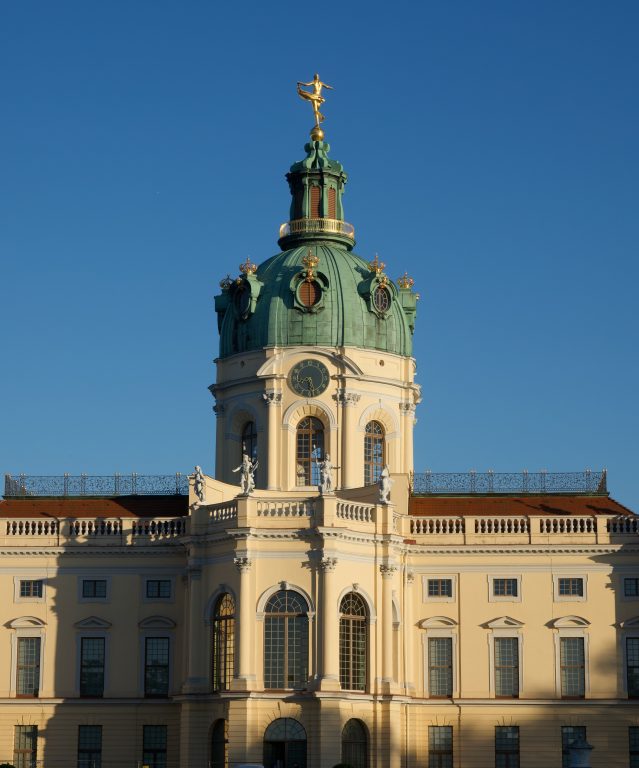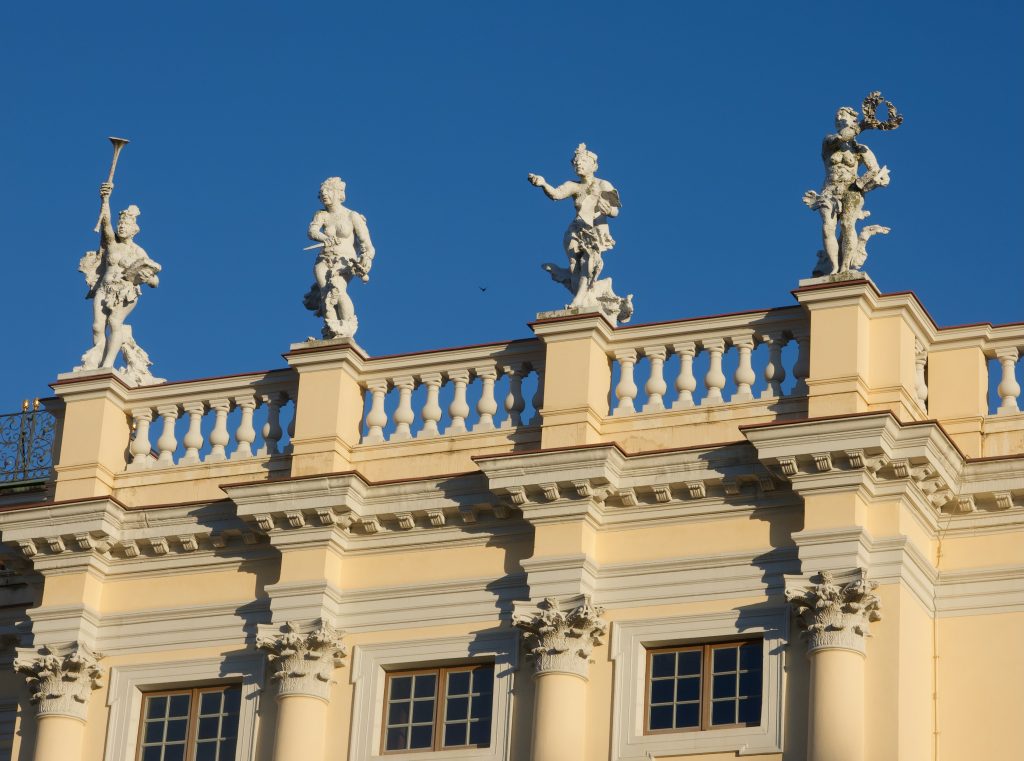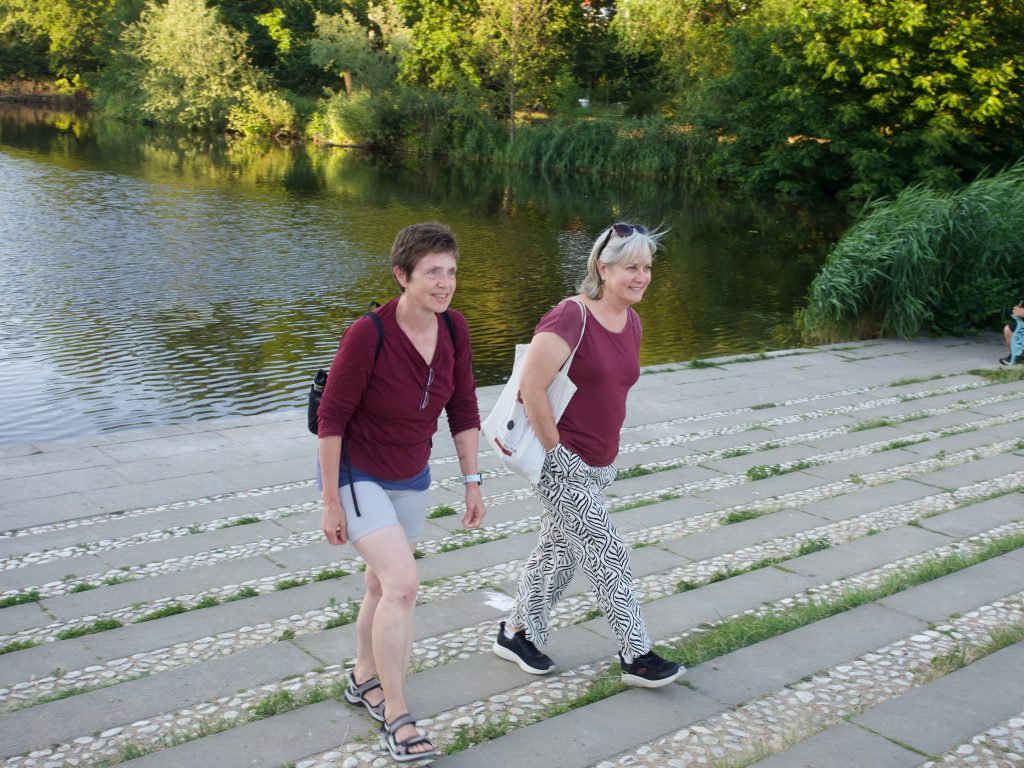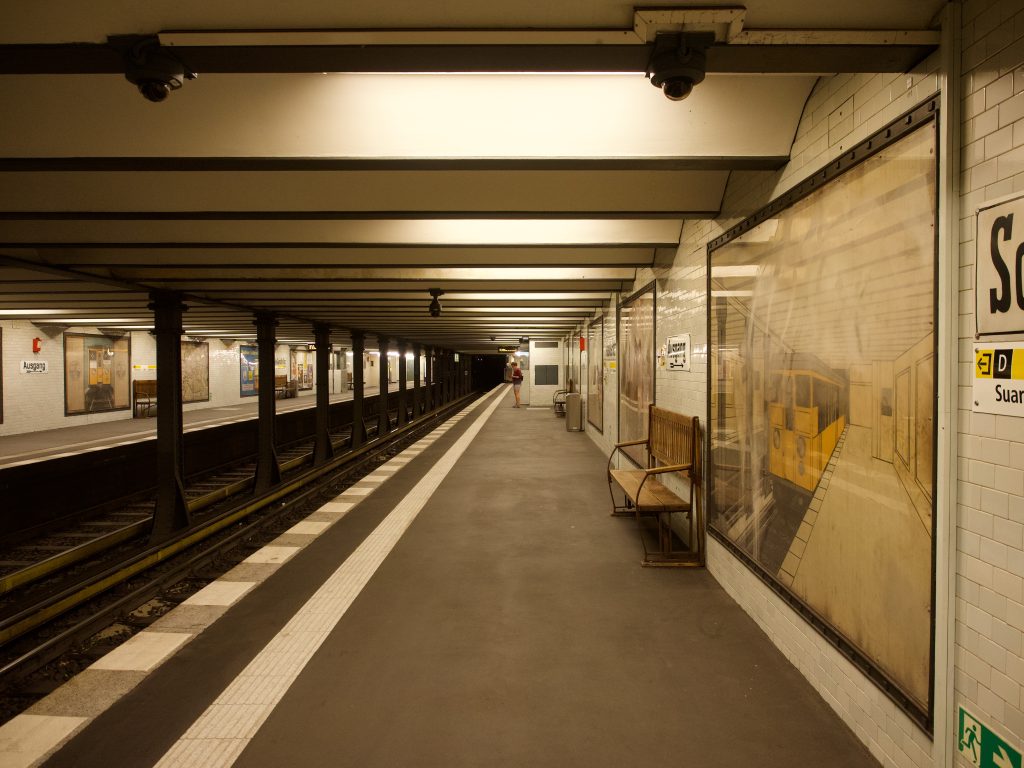We took it a bit more slowly today, starting the day out after breakfast by taking a suitcase full of laundry to the nearest laundromat. As per the vacation rental owner’s advice, we took the bus for three stops, to a spot just north of the Volkspark Friedrichhain. Since waiting for laundry is exceptionally boring, we took turns wandering around the neighborhood: I went to the nearest Edeka grocery store to buy the last round of supplies we need (aside from fresh rolls in the mornings from the bakery that is 3 minutes away) and delighted in the older residential neighborhood with a number of older apartment buildings and mature trees (I also documented the fact that one can very easily live here as a vegan based on lavish and inexpensive grocery offerings). Then, when Mark took off, he discovered yet another interesting cemetery (this one even had a cafe at the entrance and was adjacent to a park). We also both found the same ivy-covered apartment building and each took a photo, a nice sample of Berlin’s attempt to create as much urban green space as possible (lots of roof gardens and little parks, and benches with shrubbery where street corners or roads have been narrowed).
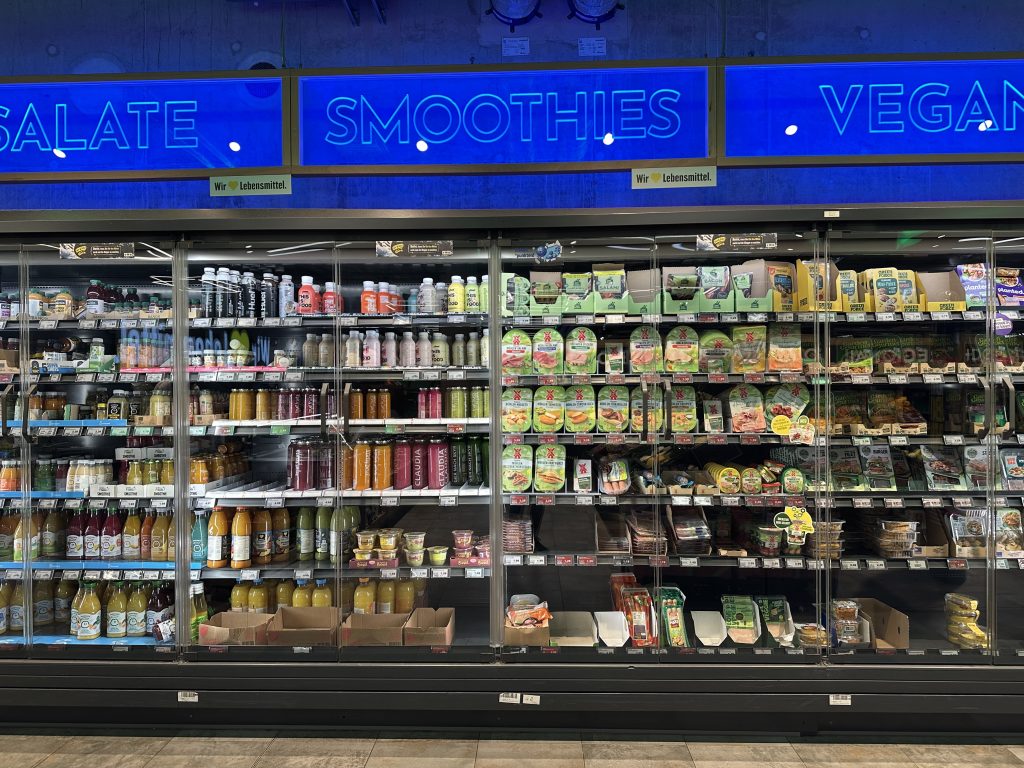

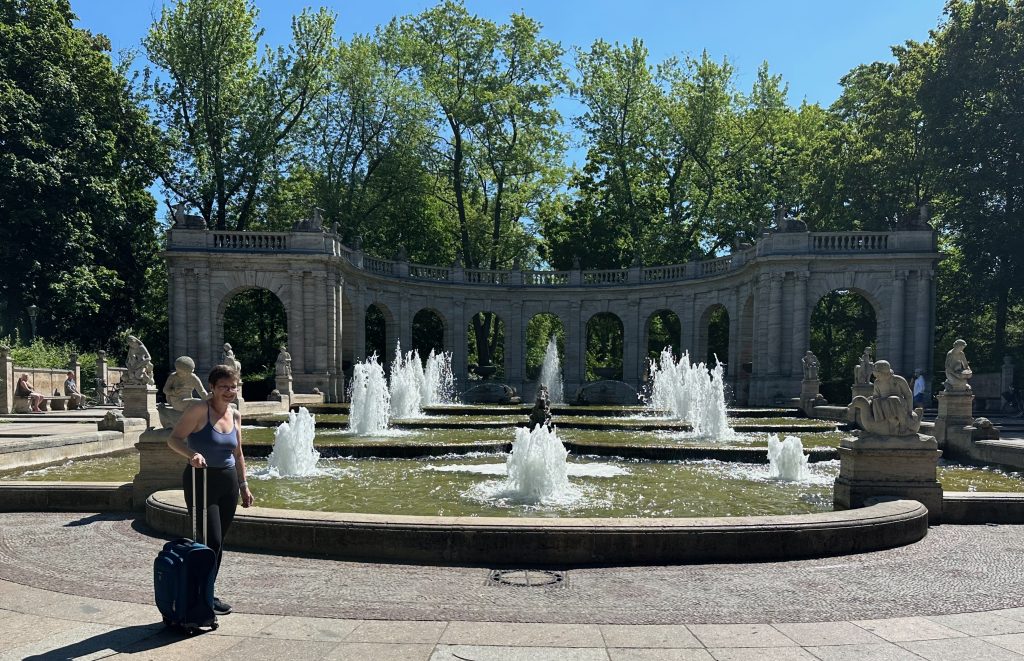
Once we had gotten our laundry back home (we walked it back, since that was basically faster than waiting for the bus, and less than a mile–the bus was really not necessary), we set out for a day out in glorious weather (80s, sunny, and a bit of wind–wonderful in the shade). We had spontaneously decided that we’d have a look at Spandau, the westernmost neighborhood of Berlin (and formerly part of West Berlin), about 45 minutes across town from us by subway and regional train. It took us a bit longer because of a 15-minute train delay, but while we waiting, we had an interesting conversation with two men in wheelchairs on their way to a boat tour about the unpredictable adventures of finding accessible routes through the town. When the train arrived, they had to basically “jump” their wheelchairs into the train since the platform was at least 8″ higher than the floor of the train, without any ramp options, and their able-bodied friends needed to help them tilt the wheelchairs up when they disembarked. One of the two men remarked that he always loves going to the US for work because you do not have to plan your route to the last detail to ensure accessibility, thanks to the ADA. Germany has gotten a lot better than it used to be about being “barrierefrei” (handicap-accessible), but there are still a lot of issues!
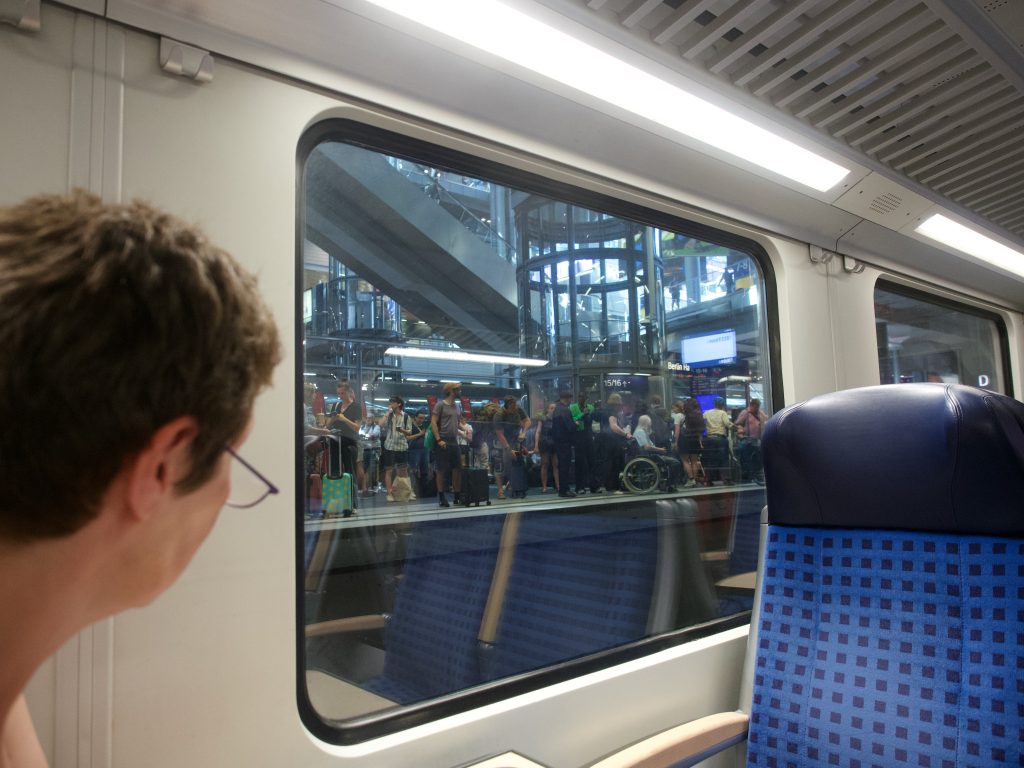
We reached Spandau around 1 pm and started wandering around. Like many Berlin neighborhoods that started out as their own independent towns and villages, Spandau has its own city center. Much less was destroyed there during WWII, and much other things were rebuilt, so the “old town” felt a lot like many smaller shopping districts (say, in Osnabrück) with older and newer business buildings, often with apartments above, a historic town hall, two churches (Nikolaskirche and a small Catholic Marienkirche–unusual in the historically mostly Protestant Berlin).
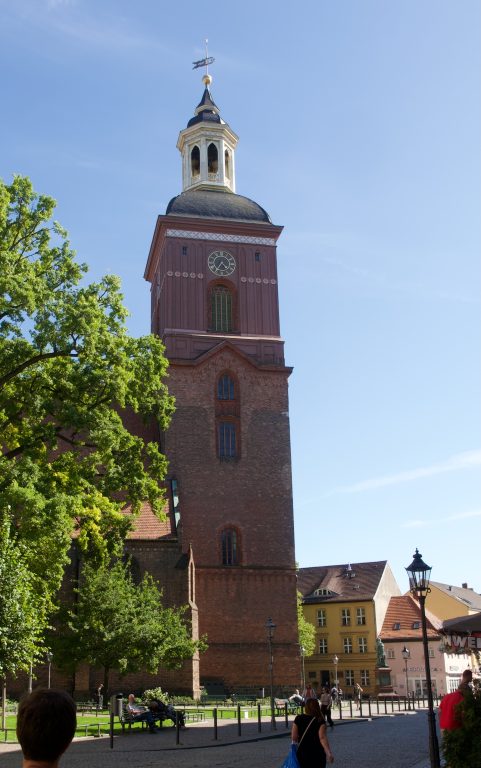
We enjoyed lovely pieces of cake, Milchkaffee (for me) and Kirschschorle (Mark) at a bakery on the main plaza, and then set out for our main goal: the Spandau citadel, a defensive fortress near where the two big Berlin rivers, the Spree and the Havel, meet. From the map, it looked pretty much like other former fortresses from the Renaissance (although not star-shaped like the one in Copenhagen or the one that no longer exists in Osnabrück, but more diamond-shaped, with four pointy bits that stick out (technical language alert). But we were in for a surprise, since we went pretty much on a whim and had not done much research: not only is the fortress very well preserved (restored many times over) but what you can see and do there today is pretty amazing. Once we crossed the bridge to the fortress and got tickets (which were worth every penny of the 4.50 / 2.50 we paid) we got to:
- Climb the restored Julius tower, the oldest part of the fortress, which goes back to the 12th century and has fabulous views of Berlin;
- See an archaeological exhibit that showed the different phases of the area from an island settlement by Slavic tribes in the 11th century, to a medieval defense structure (13th/14th century) to the later (15/16th century) fortress and “palace” for the widows of the Kurfürsten or Electors that ruled here until the early 19th century);
- As part of that exhibit, see a number of medieval Jewish gravestones that were discovered among the building material used for the fortress, since the Christian builders had no compunction about desecrating the graves from the Jewish cemetery that had been in Spandau in the 15th century. These include not just the oldest Jewish gravestone, but the oldest gravestone found in the entire area of Berlin, dating back to 1244!
- Ramble around the fortifications;
- Visit a bat cave and education space with live bats (exotic South American ones, but many local species winter in the fortress);
- Check out an amazing exhibit of public monuments that have been removed from public spaces, mostly to protect them from further damage, some also for political reasons, but with excellent documentation and intriguing display choices;
- Walk through displays of cannons used here and of documents and artifacts related to the history of Spandau.
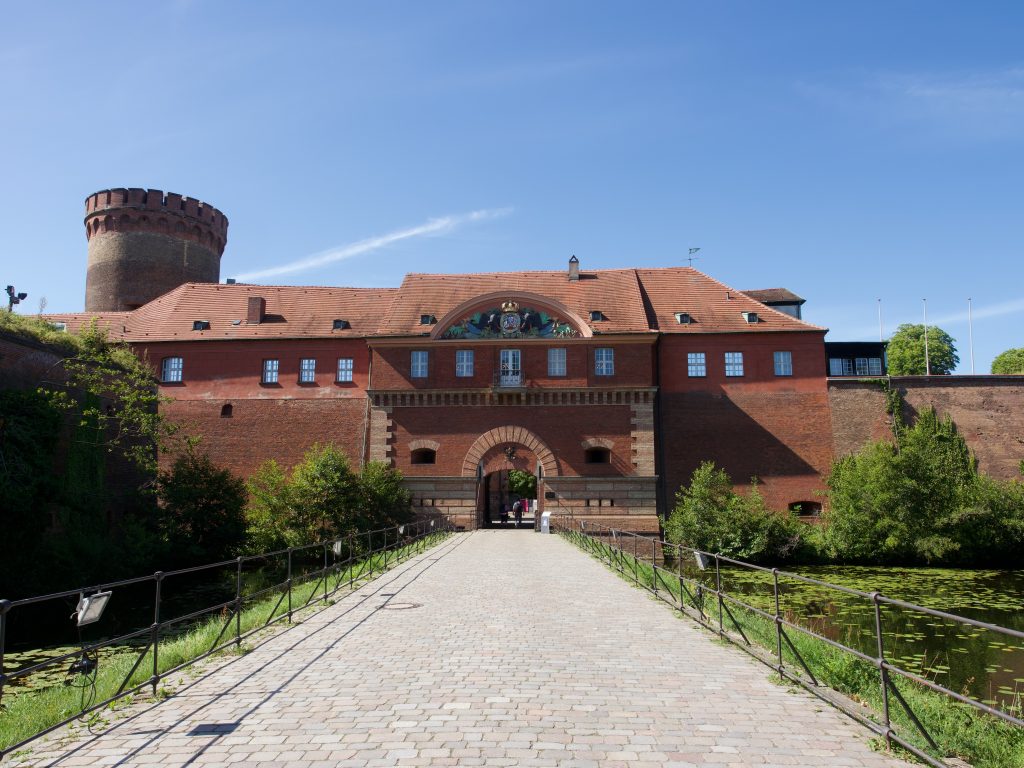
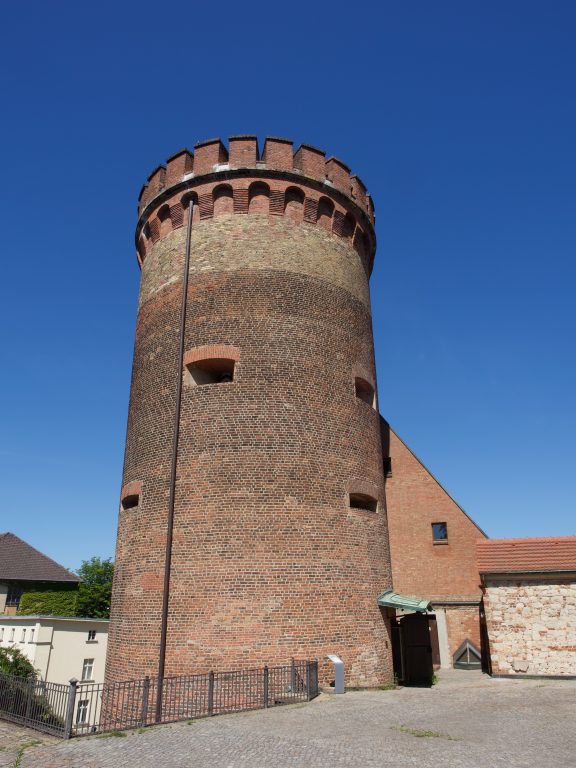
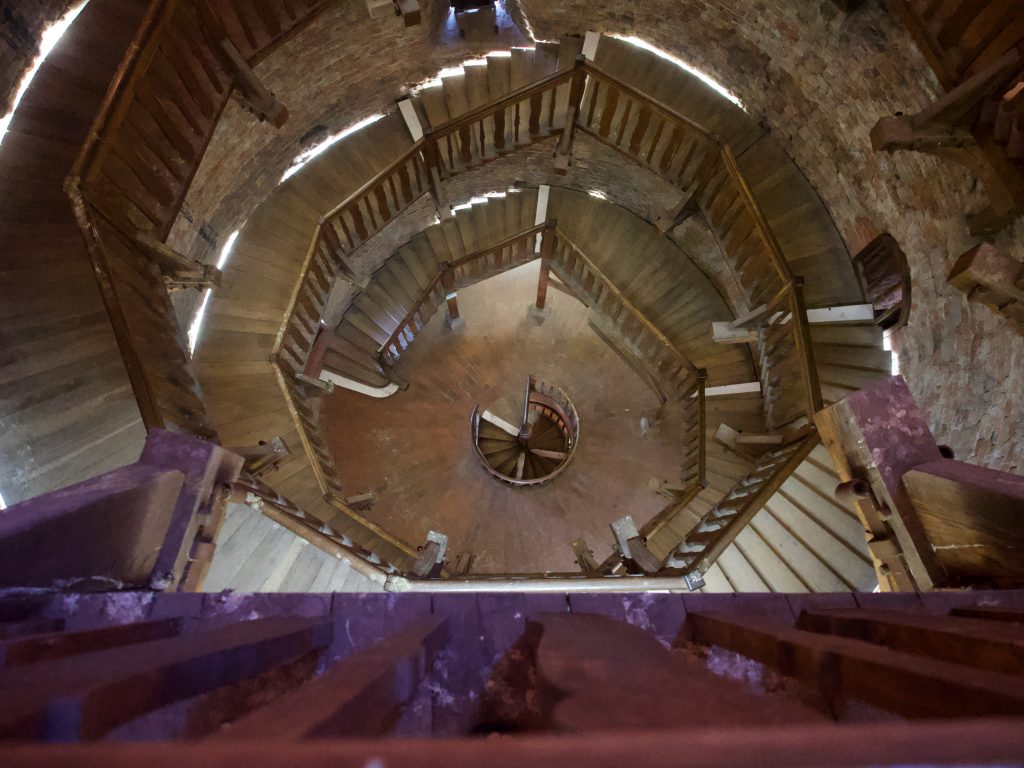
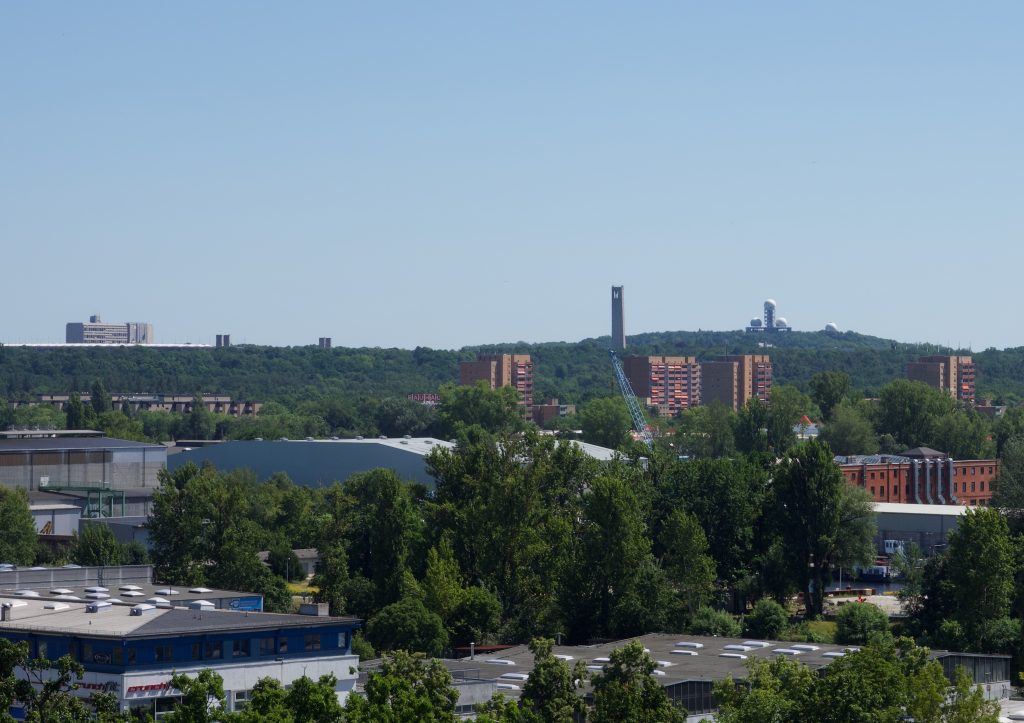
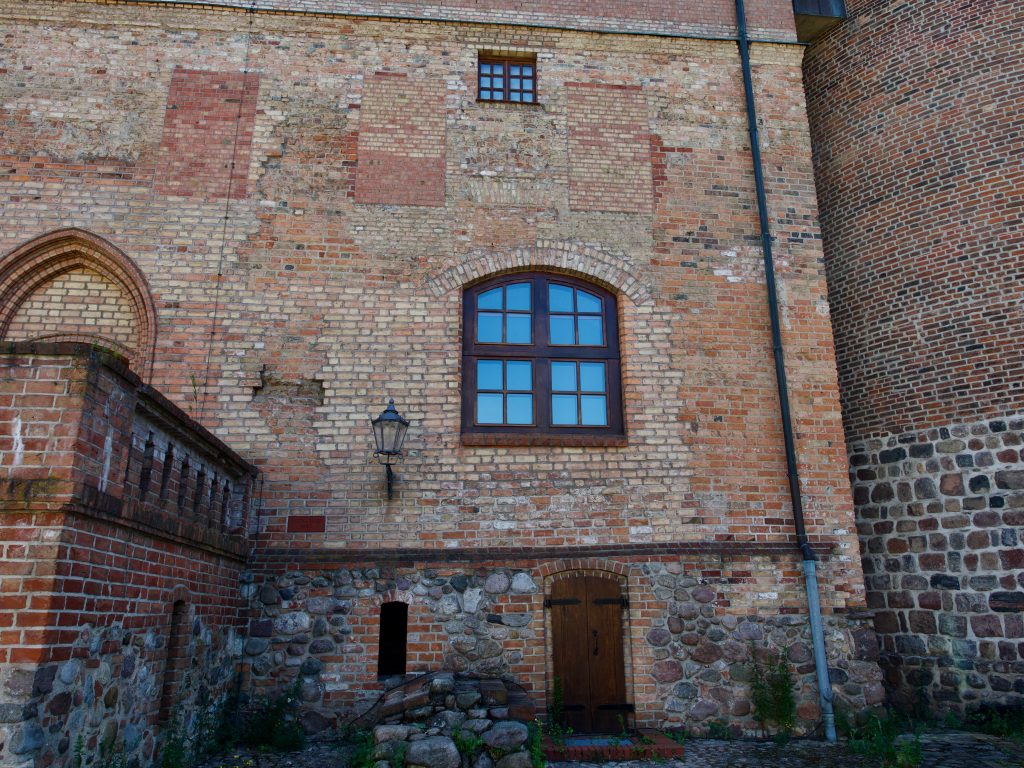
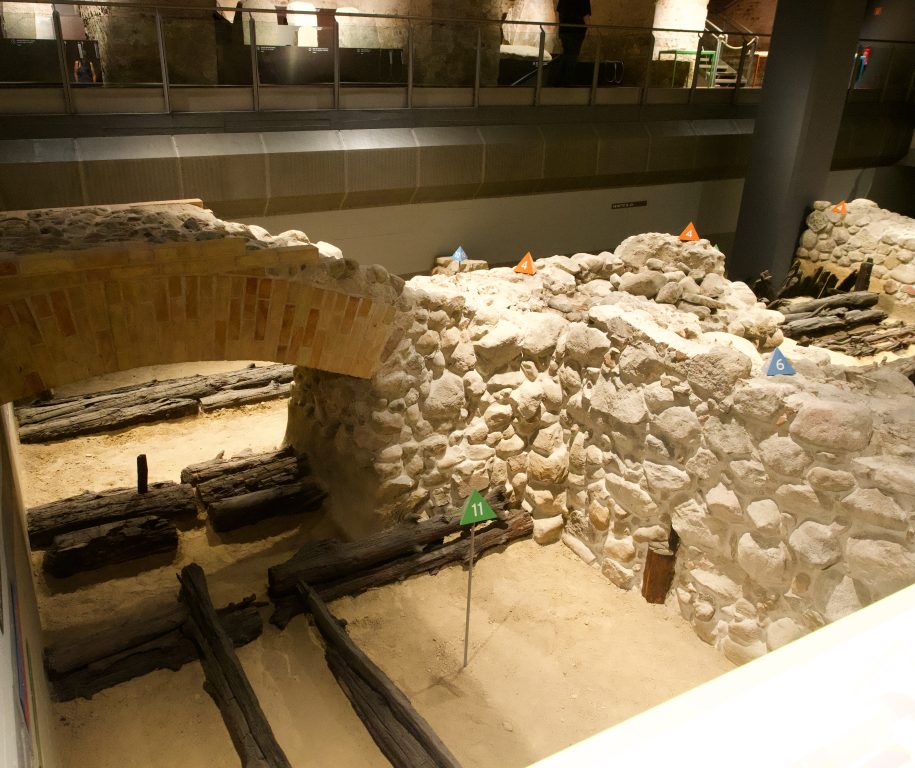
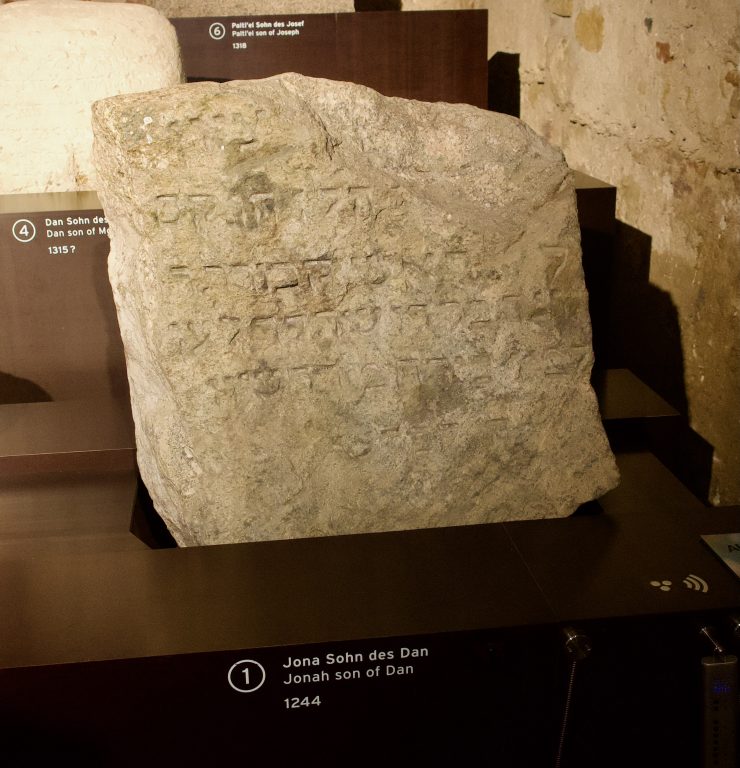
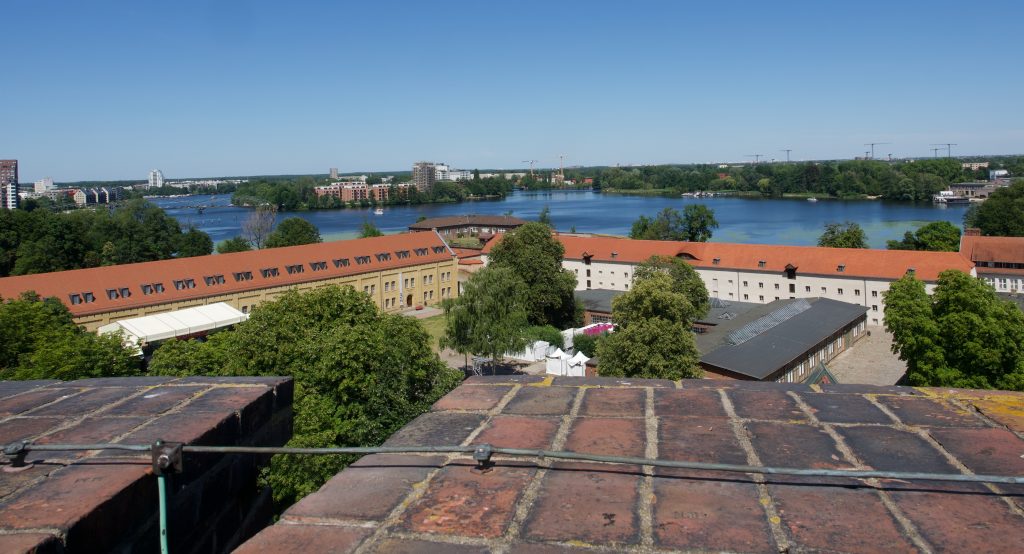
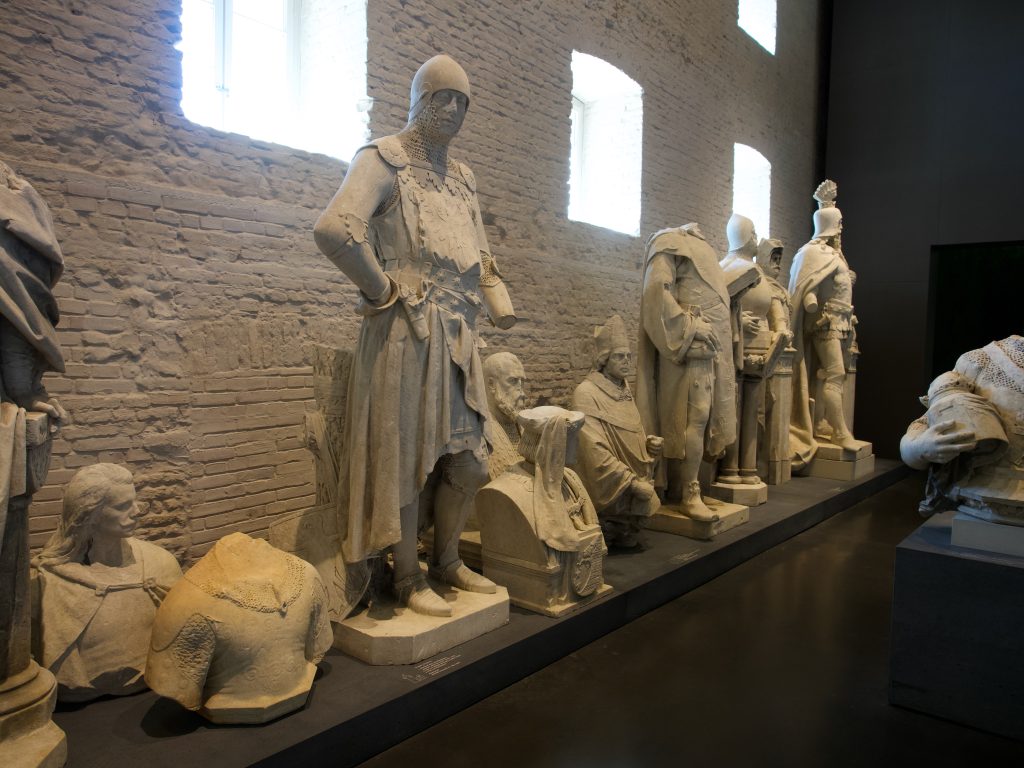
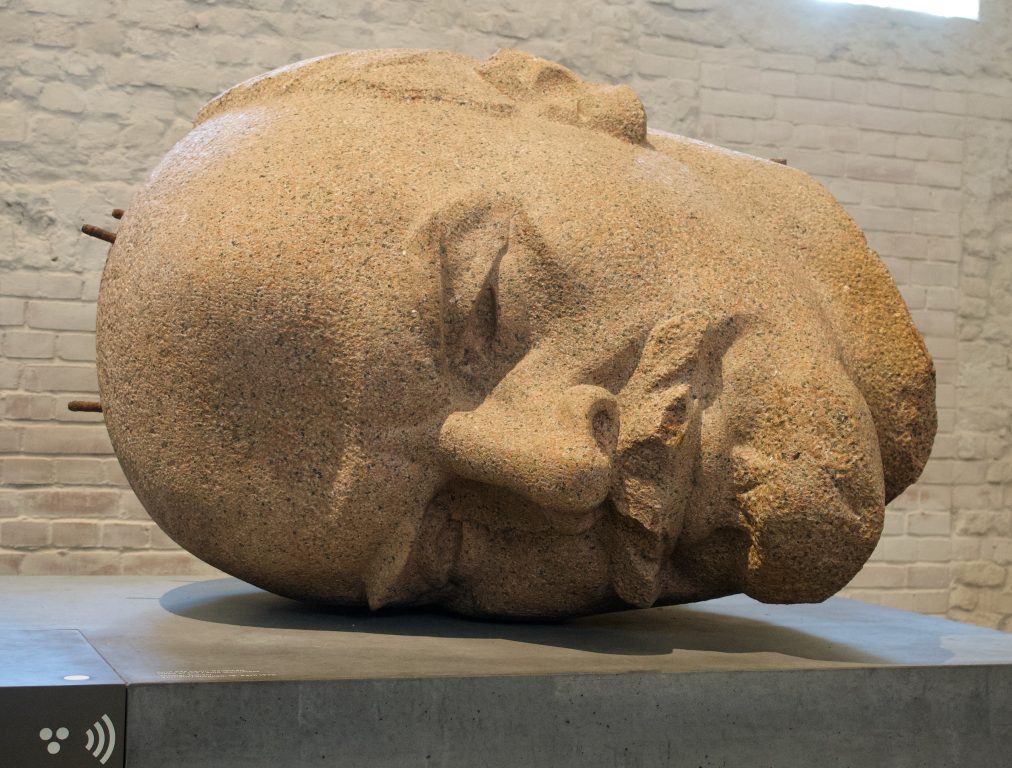
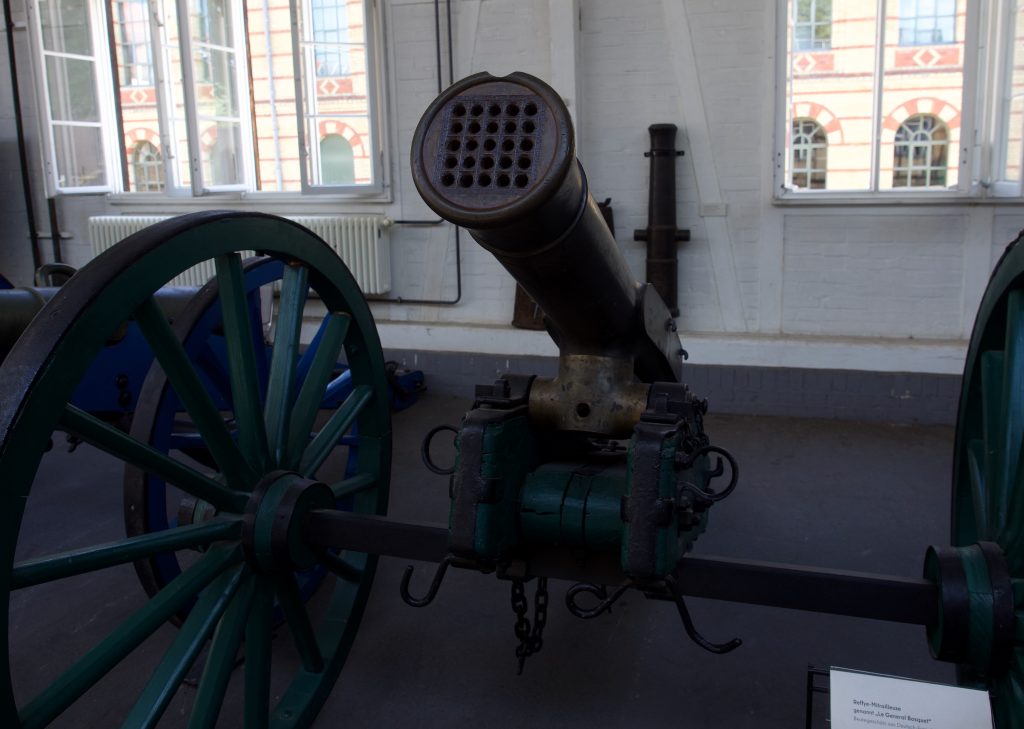
On top of all of this, the space has several smaller event spaces and a cafe, and every summer, it is also used for smaller, but high-caliber open-air rock concerts, since the large square in the middle holds 4,000 people (standing, no seats). Alanis Morissette was here earlier this month, and Lynyrd Skynyrd will play in July. It would be a fun venue for a concert!
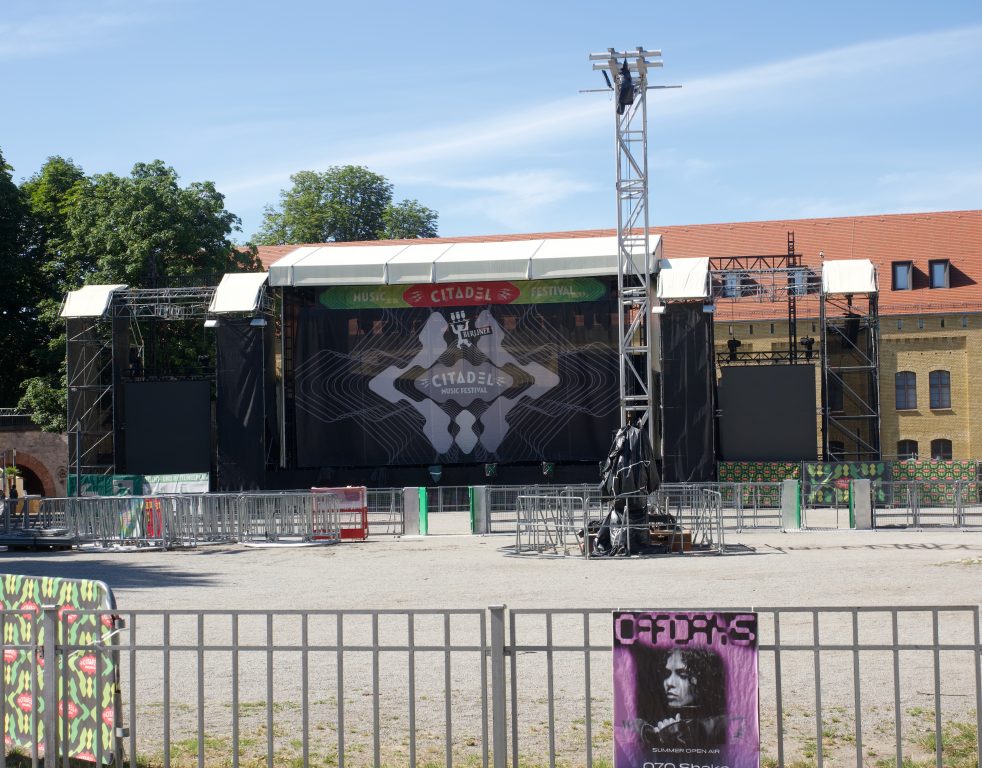
Once we had explored everything (which took 3+ hours), we headed back to downtown Spandau (a 10-minute walk) and took the subway to Charlottenburg, another famous Berlin neighborhood, to meet our friend Laurie, who has lived there for many years. We sat at a little lake near her apartment complex for a bit until she got home from work, and she showed us the recent renovations to her apartment (we had last seen her and her place in 2018, and last stayed with her in 2016–wow, a long time has passed since then and all our kids are grown!). Then we walked along the beautiful Schloßstrasse, the big avenue that leads up to the Charlottenburg palace, to find a place to have dinner. A couple of places were closed because Monday is a common “rest day” (Ruhetag) for German restaurants, but we found a lovely Croatian place with outdoor seating and had a really nice meal and a wonderful catch-up conversation, which continued after dinner on a stroll through a bit of the Schlossgarten, the palace garden, and some neighborhood streets. Charlottenburg is lovely, and I am very happy that Laurie is so very happy living here (who wouldn’t be?). She walked us back to the closest U-Bahn station, and by the time we emerged from the subway 45 minutes later, it was dark and the moon was actually up! I think this is the latest we were out and about since we got here–after 10:30 pm. We had a good day, but I must have missed my sweet spot for going to sleep and had a long awake spell during the night.
